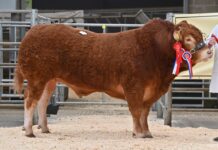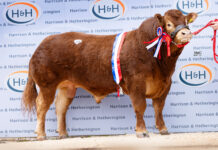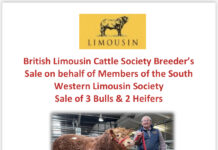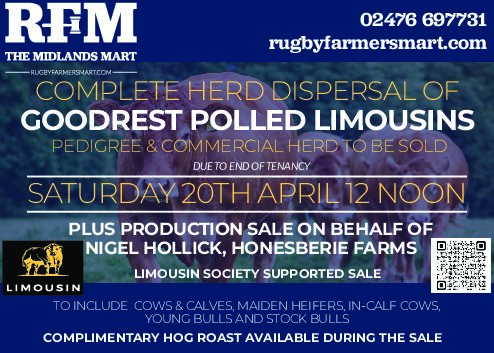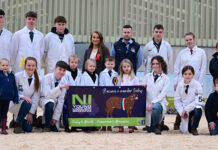BRITISH DELEGATES SEE LIMOUSINS ‘DOWN UNDER’
AT 17TH ILC, AUSTRALIA 2006
The long journey to Australia only served to heighten the anticipation of the British contingent who headed for the 17th International Limousin Congress held in early April this year. They were not to be disappointed. The Australian Limousin Association under the stewardship of General Manager, Alex McDonald put on a wonderful tour packed full of the hospitality, diversity, history and culture that underpins this blossoming and progressive country. With over twenty delegates, the UK provided the largest contingent of the fifteen countries in attendance. Officially representing the British Limousin Cattle Society was Chairman, Aled Edwards, President, Douglas Crighton and Elma Bell, and Chief Executive, Iain Kerr. Many of the UK delegates took the opportunity of an extended visit and participated in the pre and post tours of Western Australia, Queensland and New Caledonia and looked up some holiday spots, friends and family. Those who had been on the pre-conference tour in Western Australia, joined the gathering delegates in Melbourne for the beginning of the core conference. The following days were made up of eye-catching herd visits as the Congress snaked its way by bus from Melbourne to Canberra and finally towards Sydney.
The herds presented throughout the Congress were diverse in type with varying influence of British, French and North American genetics. Many herds had a breeding policy based around black and/or polled Limousin, and at one particular herd, the Birubi Stud of Michael and Annette Tynan, we saw “Limflex” – a Limousin/Aberdeen Angus Hybrid that had been originally developed by the North American Limousin Foundation. To British and European eyes these cattle lacked many of the original Limousin characteristics, particularly fleshing. In context, we quickly gained recognition of the harsh and varying climatic conditions that the Australian cattle industry works within, and also the export demand for light, heavily marbled carcasses for the premium Japanese market. So called “soft cattle” with heavy fat cover were also essential to withstand the heat and long periods of drought and poor food reserves.
Diversity of type suitable to the industry was a theme throughout and the UK delegates also saw herds with a more recognizable type of Limousin where the influence of contemporary British and French genetics was prominent. Indeed, the outstanding highlight for many of the UK contingent was the visit to the Homestation Herd of Tony & Gill Whistler. This was a nostalgic trip for many of the delegates with Gill being the daughter of the late King and Yvonne Forster of the world famous Tanhill Herd. The Whistlers had emigrated to Australia and all of the cattle in the Homestation Herd were descendants of a batch of embryos imported in the 80’s from Tanhill in the UK.
The herd visits ended and we arrived at spectacular Sydney for the main events of the Conference. The Technical Day was well structured and very informative. In the morning, the session focussed on the Australian Beef Industry in terms of its recent technical developments with the Meat Standards Australia Carcase Grading Scheme based on predicted eating quality being illustrated, as well as the recently introduced EID traceability system.
Of more concern to European ears was the reliance of the Australian feedlot system on the use of growth hormone to deliver marketable cattle. It was clear that the continental breeds would never achieve the level of dominance that they have in the UK, whilst the lack of growth and carcase quality in the British breeds could be compensated for by the use of hormones. Consumer perception of a healthy beef product seemed not to be based on the present day scientific evidence.
Docility had clearly impacted on the acceptance of the breed in Australia and was a constantly referred to topic throughout the Congress. In the afternoon Technical session, the delegates heard some papers on docility scoring around the world, and also the position of the Limousin breed in many countries. Amongst the most impressive of these was a paper given by Iain Kerr on behalf of the 2004 ILC hosts, the UK. The dominant position that the Limousin holds within the UK beef industry is the envy of many other National Limousin Associations, and they are very keen to understand the path of its ascendancy over the years.
A particular high point of the ILC was the National Show held on the judging lawns at the annual Sydney Royal Easter Show within the Olympic Park. A spectacular show in superb surrounds, the approximately 300 head represented the largest ever show of Limousins in Australia. Impressively judged by one of Australia’s leading Charolais breeders, David Bondfield, it was a great show of Limousin cattle mirroring the diversity of type that we had seen on the herd visits throughout the tour. Encouragingly, some of the very youngest cattle were progeny of British bulls whose semen had been acquired during and following the UK ILC 2004. Indeed, the Supreme Champion, the exceptional young cow Rosehill Rosie 6, was also sired by a British bull, Harvest Olympus. Bred by Chris and Ros Cliff this Championship win was very poignant for Alan Fotheringham who was part of the UK delegation at ringside. It was Alan who sold Harvest Olympus at the 1981 ILC auction for export to Canada at 7,500gns. Olympus went on to become a legend within the North American Herd book for over 2 decades and his influence continues to this day. On the Friday, the steer judging at the Sydney Royal saw Limousin steers completely dominant and taking all the major awards on offer.
At the end of a warm and hugely interesting ILC, the UK delegates left much invigorated by the international standing of the Limousin breed, and inspired to progress our respective nations’ role in taking this most versatile of breeds forward to meet the challenges of the new world order. Italy, under the Chairmanship of Camillo Del Verde and ILC President Beppe Pantaleoni, hosts ILC in 2008 with a confidence that suggests the 18th International Limousin Congress will be yet another one to remember!


